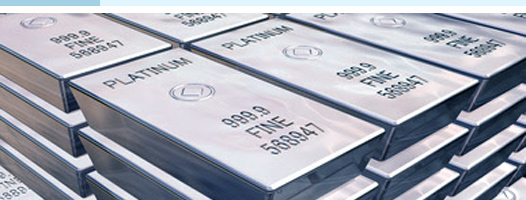
Although platinum is regarded as a "new" metal in its present form, it has a long history. Ancient Egyptians and Pre-Columbian Indian civilizations already valued it as a very important element. The "modern" discovery of platinum is attributed to Spanish conquerors in the 17th century. Actually the name platinum was given by the Spanish word, platina, meaning little silver. Spaniards had discovered alluvial deposits of the rare white metal when they were mining in search for gold in the Choco region in Colombia. Paradoxically, they considered platinum as a nuisance for their mining of gold.
After the introduction of platinum into Europe in the 18th century it became a metal of interest for scientists due to its special properties. In 1751, a Swedish assayer, Scheffer, recognized platinum as the seventh existing element at that time. The French physicist P.F. Chabaneau first obtained malleable platinum in 1789 in order to produce a chalice presented to Pius VI. It seems that the British chemist W. H. Wollaston was the first person to obtain a sample of pure platinum in the early 1800s. The techniques used by Wollaston in the separation of PGMs are considered to be the basis for modern platinum metallurgy.

The production of platinum requires very complex processing techniques that were not available until the end of the 19th century. Moreover, the high melting points of platinum made it very difficult to work with it. It was only with the development of new refining techniques that platinum was more widely used for new industrial applications. On the other hand, the use of platinum in fine jewelry rose quickly in the beginning of the 20th century. Platinum was already highly appreciated for its beauty and durability.
During World War II the availability of platinum was limited since it was declared as a strategic material. Use of platinum for most non-military applications was prohibited. After the war, consumption of platinum increased due to its catalytic properties.
This increase in demand followed the development of molecular conversion techniques in the refining of petroleum. In the 1970s this demand grew even more thanks to the introduction of automotive emission standards in the developed countries.
One of the most important obstacles for a more widespread use of platinum in its history has been its limited supply. At present time, deposits of platinum are concentrated in a few areas in the world, mainly in South Africa and the Russian Federation. However, in the last few decades new mines have been opened and sophisticated platinum mining techniques have been developed. Platinum has become a metal of great importance in the world and prospects for this metal are very positive.





